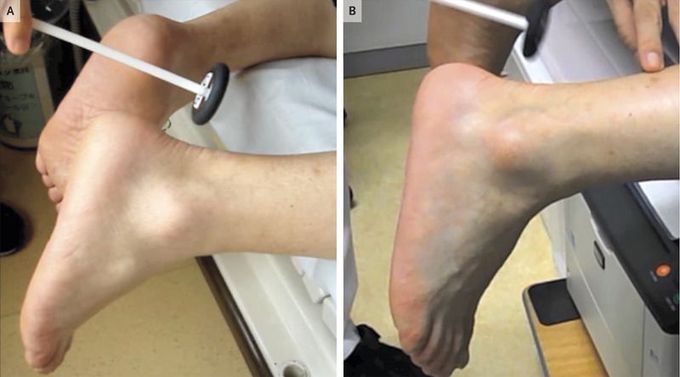


Woltman’s Sign of Hypothyroidism
A 53-year-old man presented to the endocrinology clinic with a 6-month history of progressive generalized fatigue and increased sensitivity to cold. At the time of presentation, a physical examination was notable for the presence of a diffusely enlarged thyroid gland and delayed relaxation of the ankle jerk reflex (Panel A). Laboratory investigations were notable for a serum thyrotropin level of 200 mIU per liter (reference range, 0.35 to 5.50) and a serum free thyroxine level of 0.05 ng per deciliter (1 pmol per liter) (reference range, 0.89 to 1.76 ng per deciliter [11 to 23 pmol per liter]). Woltman’s sign, which refers to the delayed relaxation phase of a deep-tendon reflex, is a neurologic manifestation of hypothyroidism. This delayed relaxation can also be associated with pregnancy, anorexia nervosa, diabetes mellitus, and advanced age. The patient received thyroid hormone replacement therapy with levothyroxine for primary hypothyroidism. One month later, the serum free thyroxine level had increased to 1.23 ng per deciliter (16 pmol per liter), the serum thyrotropin level was 20.5 mIU per liter, and the patient’s ankle jerk relaxation had normalized (Panel B). The thyrotropin level normalized to 3.2 mIU per liter at the subsequent follow-up visit.

